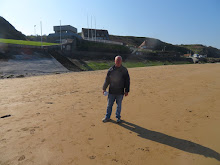This month saw the birthday of my middle son, John H. Lamberton. Next month will see the birthdays of my oldest child, James B. Rogers, and my youngest child, Daniel W. Lamberton.
I invited Johnny, whom I haven't seen nor heard from in years (he and his brothers became estranged from me in a classic case of Parental Alienation Syndrome foisted upon them as children by, in my opinion, their mother, Sharon R. Lightbourne), to have dinner with me at a nearby restaurant on his birthday but he never showed. He's an adult now and lives with his choices, and personally I think it unseemly that he asked me to arrange for full payment of his college tuition and fees and unprincipled that he accepted every cent of the payments I provided for when he regards me as so odious.
payment of his college tuition and fees and unprincipled that he accepted every cent of the payments I provided for when he regards me as so odious.
I haven't seen nor heard from Jimmy in half a decade now, nor from Danny in almost four years, and nobody in my entire family has heard from any of them in eight or nine years. But parental love is so strong that it transcends individual grief and always seeks to succor familial victims of abuse (in my opinion PAS is child abuse). (Right: Jimmy, striker and sometime goalie for the McLean Sting, circa 1999.)
I use this forum out of necessity because their mother refuses to disclose their addresses to me; so Jimmy, please join me for lunch on your birthday at noon at the Lost Dog Cafe in Westover, and Danny, please join me for dinner on your birthday at 8 pm at the Lost Dog Cafe in Westover. We'll start out a day at a time as father and son(s) in living out the rest of our lives from there. (Left: Danny watches as Johnny reaches into a lobster tank at a restaurant in Maine, circa 1999.)
on your birthday at 8 pm at the Lost Dog Cafe in Westover. We'll start out a day at a time as father and son(s) in living out the rest of our lives from there. (Left: Danny watches as Johnny reaches into a lobster tank at a restaurant in Maine, circa 1999.)
I invited Johnny, whom I haven't seen nor heard from in years (he and his brothers became estranged from me in a classic case of Parental Alienation Syndrome foisted upon them as children by, in my opinion, their mother, Sharon R. Lightbourne), to have dinner with me at a nearby restaurant on his birthday but he never showed. He's an adult now and lives with his choices, and personally I think it unseemly that he asked me to arrange for full
 payment of his college tuition and fees and unprincipled that he accepted every cent of the payments I provided for when he regards me as so odious.
payment of his college tuition and fees and unprincipled that he accepted every cent of the payments I provided for when he regards me as so odious.I haven't seen nor heard from Jimmy in half a decade now, nor from Danny in almost four years, and nobody in my entire family has heard from any of them in eight or nine years. But parental love is so strong that it transcends individual grief and always seeks to succor familial victims of abuse (in my opinion PAS is child abuse). (Right: Jimmy, striker and sometime goalie for the McLean Sting, circa 1999.)
I use this forum out of necessity because their mother refuses to disclose their addresses to me; so Jimmy, please join me for lunch on your birthday at noon at the Lost Dog Cafe in Westover, and Danny, please join me for dinner
 on your birthday at 8 pm at the Lost Dog Cafe in Westover. We'll start out a day at a time as father and son(s) in living out the rest of our lives from there. (Left: Danny watches as Johnny reaches into a lobster tank at a restaurant in Maine, circa 1999.)
on your birthday at 8 pm at the Lost Dog Cafe in Westover. We'll start out a day at a time as father and son(s) in living out the rest of our lives from there. (Left: Danny watches as Johnny reaches into a lobster tank at a restaurant in Maine, circa 1999.) 





